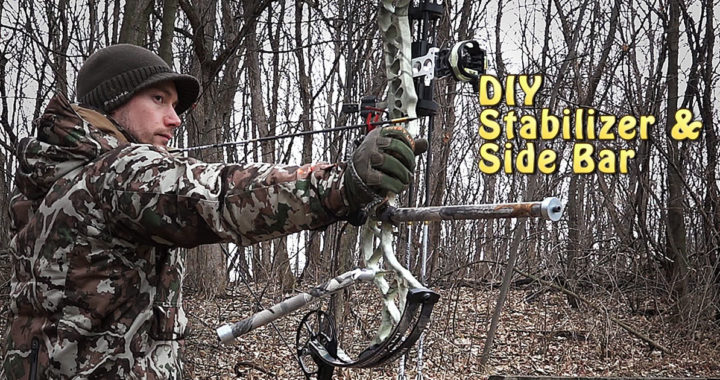Mastering Accuracy: The Duty of Compound Bow Stabilizers in Archery
Mastering Accuracy: The Duty of Compound Bow Stabilizers in Archery
Blog Article
Optimizing Your Archery Performance With the Right Compound Bow Stabilizer: a Detailed Introduction
In the world of precision, uniformity and archery are vital to accomplishing ideal efficiency. One critical yet often-overlooked part in enhancing accuracy is the compound bow stabilizer. This plain device plays a substantial function in steadying your aim, reducing bow torque, and soaking up resonances. The efficiency of a stabilizer pivots on various elements, including design, positioning, and weight. By comprehending the subtleties of selecting and maximizing a compound bow stabilizer, archers can tweak their tools to boost their shooting experience to new degrees of proficiency and control.
Importance of Bow Stabilizers in Archery

In addition, bow stabilizers assist in stabilizing the weight distribution of the bow, which can enhance the archer's security while firing and intending. By including weight to the front of the bow, stabilizers can lower the amount of torque experienced upon release, leading to a smoother and much more controlled shot - compound bow stabilizer. This weight distribution also assists in holding the bow constant for a longer duration, enabling the archer to intend extra precisely
Kinds Of Compound Bow Stabilizers
When considering the numerous kinds of substance bow stabilizers readily available, it is necessary to understand their unique features and functions to figure out the most appropriate alternative for optimizing archery efficiency. The most typical types of substance bow stabilizers include sidebar stabilizers, front stabilizers, and back stabilizers. Back stabilizers, additionally called rear stabilizers, are installed to the back of the bow and aid in counterbalancing the weight of various other devices, resulting in boosted security and constant intending.
Factors to Think About When Picking
In evaluating substance bow stabilizers, recognizing the distinctive features and features of each kind is crucial for making a notified choice on the most suitable choice to enhance archery efficiency. When selecting a stabilizer, one need to think about the weight of the stabilizer itself. By meticulously assessing these variables, archers can choose a substance bow stabilizer that lines up with their shooting style and maximizes their total efficiency on the archery array.
Setup and Adjustment Tips
For optimum performance and precision in archery, mastering the installation and modification of your bow stabilizer is necessary. Correct installment begins with affixing the stabilizer to the bow's riser, guaranteeing it is firmly secured. The majority of stabilizers feature placing hardware for easy installation, but it's important to adhere to the supplier's standards for the certain version you have. When connected, adjusting the stabilizer includes discovering the appropriate balance in between weight distribution and size. Experiment with various combinations till you attain the preferred feel and stability.
When readjusting the stabilizer, begin with little incremental adjustments rather than drastic adjustments. Pay attention to exactly how the bow responds to modifications in stabilizer settings and over here make modifications as necessary. On a regular basis inspect the stabilizer's tightness and total condition to ensure it continues to operate ideally.
Upkeep and Care Standards

It is additionally crucial to store your bow with the stabilizer in a protected and risk-free place when not in usage. Complying with these maintenance and treatment standards will certainly aid you get the most out of your bow stabilizer and enhance your general archery efficiency.
Final Thought
To conclude, picking the linked here right substance bow stabilizer is important for taking full advantage of archery performance. Comprehending the value, kinds, factors to think about, installment and change pointers, as well as maintenance and treatment guidelines can considerably influence one's precision and uniformity in shooting. By picking a stabilizer that fits specific demands and preferences, archers can boost their overall efficiency and accomplish better results on the array or in competition.
Bow stabilizers play a critical function in boosting an archer's accuracy and consistency by lowering vibrations and stabilizing the bow during the release of an arrowhead - compound bow stabilizer.In addition, bow stabilizers aid in stabilizing the weight circulation of the bow, which can improve this hyperlink the archer's stability while firing and intending. The most common kinds of substance bow stabilizers consist of sidebar stabilizers, front stabilizers, and back stabilizers. Back stabilizers, also called back stabilizers, are placed to the back of the bow and help in counteracting the weight of various other devices, resulting in improved stability and constant aiming. When choosing a stabilizer, one have to think about the weight of the stabilizer itself
Report this page